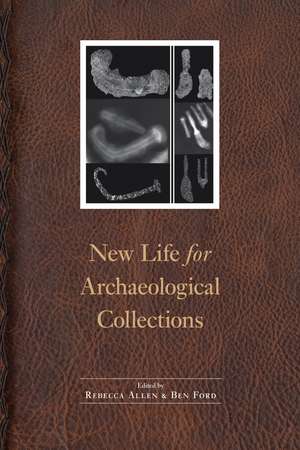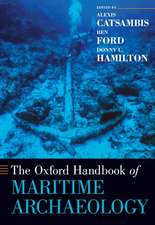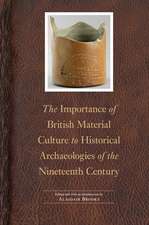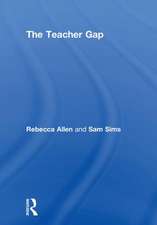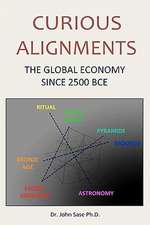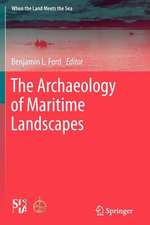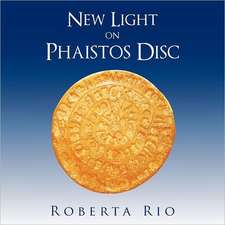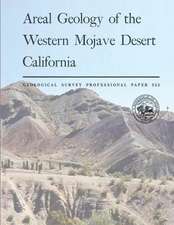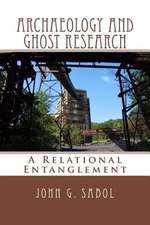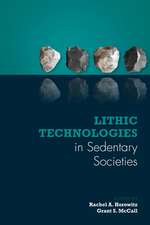New Life for Archaeological Collections: Society for Historical Archaeology Series in Material Culture
Editat de Rebecca Allen, Ben Forden Limba Engleză Hardback – 30 apr 2019
New Life for Archaeological Collections explores solutions to what archaeologists are calling the “curation crisis,” that is, too much stuff with too little research, analysis, and public interpretation. This volume demonstrates how archaeologists are taking both large and small steps toward not only solving the dilemma of storage but recognizing the value of these collections through inventorying and cataloging, curation, rehousing, artifact conservation, volunteer and student efforts, and public exhibits.
Essays in this volume highlight new questions and innovative uses for existing archaeological collections. Rebecca Allen and Ben Ford advance ways to make the evaluation and documentation of these collections more accessible to those inside and outside of the scholarly discipline of archaeology. Contributors to New Life for Archaeological Collections introduce readers to their research while opening new perspectives for scientists and students alike to explore the world of archaeology. These essays illuminate new connections between cultural studies and the general availability of archaeological research and information. Drawing from the experience of university professors, government agency professionals, and cultural resource managers, this volume represents a unique commentary on education, research, and the archaeological community.
Essays in this volume highlight new questions and innovative uses for existing archaeological collections. Rebecca Allen and Ben Ford advance ways to make the evaluation and documentation of these collections more accessible to those inside and outside of the scholarly discipline of archaeology. Contributors to New Life for Archaeological Collections introduce readers to their research while opening new perspectives for scientists and students alike to explore the world of archaeology. These essays illuminate new connections between cultural studies and the general availability of archaeological research and information. Drawing from the experience of university professors, government agency professionals, and cultural resource managers, this volume represents a unique commentary on education, research, and the archaeological community.
Preț: 485.33 lei
Preț vechi: 570.98 lei
-15% Nou
Puncte Express: 728
Preț estimativ în valută:
92.87€ • 97.22$ • 76.84£
92.87€ • 97.22$ • 76.84£
Carte tipărită la comandă
Livrare economică 07-21 aprilie
Preluare comenzi: 021 569.72.76
Specificații
ISBN-13: 9781496212955
ISBN-10: 1496212959
Pagini: 450
Ilustrații: 30 figures, 6 maps, 14 tables, index
Dimensiuni: 152 x 229 x 15 mm
Greutate: 0.81 kg
Editura: Nebraska
Colecția University of Nebraska Press
Seria Society for Historical Archaeology Series in Material Culture
Locul publicării:United States
ISBN-10: 1496212959
Pagini: 450
Ilustrații: 30 figures, 6 maps, 14 tables, index
Dimensiuni: 152 x 229 x 15 mm
Greutate: 0.81 kg
Editura: Nebraska
Colecția University of Nebraska Press
Seria Society for Historical Archaeology Series in Material Culture
Locul publicării:United States
Notă biografică
Rebecca Allen is director of the Tribal Historic Preservation Department at the United Auburn Indian Community and copublications and journal associate editor for the Society for Historical Archaeology. She is coeditor of Ceramic Identification in Historical Archaeology: The View from California, 1822–1940 and Baffle Marks and Pontil Scars: A Reader on Historic Bottle Identification. Ben Ford is a professor and chair of the Department of Anthropology at Indiana University of Pennsylvania. He is the coeditor, with Alexis Catsambis and Donny Hamilton, of The Oxford Handbook of Maritime Archaeology.
Cuprins
List of Figures
List of Maps
List of Tables
Introduction: Reclaiming the Research Potential of Archaeological Collections
Rebecca Allen, Ben Ford, and J. Ryan Kennedy
Part 1. New Accessibility for Archaeological Collections
1. Yes! You Can Have Access to That! Increasing and Promoting the Accessibility of Maryland’s Archaeological Collections
Rebecca J. Morehouse
2. The History and Revitalization of the California State Parks Archaeological Collections
Glenn J. Farris
3. A Million Ways to Teach Archaeology: The Hanna’s Town Collection
Ben Ford
4. The Digital Archaeological Archive of Comparative Slavery: A Case Study in Open Data and Collaboration in the Field of Archaeology
Jillian E. Galle, Elizabeth Bollwerk, and Fraser D. Neiman
5. Integration and Accessibility: A Case Study of the Curles Neck (44HE388) Legacy Data
Barbara J. Heath, Mark A. Freeman, and Eric G. Schweickart
6. Balancing Access, Research, and Preservation: Conservation Concerns for Old Collections
Emily Williams and Katherine Ridgway
Part 2. New Research with Archaeological Collections
7. Reanalyzing, Reinterpreting, and Rediscovering the Appamattucks Community
D. Brad Hatch and Lauren K. McMillan
8. Dust and Bones: A Modern Analysis of Hanna’s Town Fauna
Stefanie M. Smith
9. Challenges and Opportunities with the Market Street Chinatown Collection, San Jose, California
J. Ryan Kennedy
10. Pictures Speak for Themselves: Case Studies Proving the Significance and Affordability of X Ray for Archaeological Collections
Kerry S. González and Michelle Salvato
11. From Ship to Kindling to Ship: The Digital Reconstruction of the Royal Savage Timber Assemblage
Jonathan Crise, Ben Ford, and George Schwarz
12. Reconstructing Site Provenience at Ouiatenon in Indiana
Kelsey Noack Myers
Part 3. New Futures for Archaeological Collections
13. Integrating New Archaeology and Outreach into Existing Collections and Exhibits from the Cooper-Molera Adobe Complex, Monterey, California
Candace Ehringer and Rebecca Allen
14. Thinking outside the Hollinger Box: Getting National Park Service Archaeological Collections out of the Box and into the Public Eye
Alicia Paresi, Jessica Costello, Nicole Estey, and Jennifer McCann
15. Artifacts of Outlander: Using Popular Culture to Promote Maryland’s Archaeological Collections
Sara Rivers Cofield and Caitlin Shaffer
16. Raising Interest with Archaeological Currency: Student Engagement with the Federal Reserve Bank Site Collection in Baltimore, Maryland
Patricia Samford and Rachelle M. Green
17. Beyond the Shelf: Anthropological Collections at the University of Montana
C. Riley Augé, Michael Black Wolf, Emerson Bull Chief, Kelly J. Dixon, Virgil Edwards, Gerald Gray, Conrad Fisher, Teanna Limpy, Katie McDonald, Ira Matt, John Murray, Raymond “Abby” Ogle, Sadie Peone, Alvin Windy Boy, and Darrell “Curley” Youpee
List of Contributors
Index
List of Maps
List of Tables
Introduction: Reclaiming the Research Potential of Archaeological Collections
Rebecca Allen, Ben Ford, and J. Ryan Kennedy
Part 1. New Accessibility for Archaeological Collections
1. Yes! You Can Have Access to That! Increasing and Promoting the Accessibility of Maryland’s Archaeological Collections
Rebecca J. Morehouse
2. The History and Revitalization of the California State Parks Archaeological Collections
Glenn J. Farris
3. A Million Ways to Teach Archaeology: The Hanna’s Town Collection
Ben Ford
4. The Digital Archaeological Archive of Comparative Slavery: A Case Study in Open Data and Collaboration in the Field of Archaeology
Jillian E. Galle, Elizabeth Bollwerk, and Fraser D. Neiman
5. Integration and Accessibility: A Case Study of the Curles Neck (44HE388) Legacy Data
Barbara J. Heath, Mark A. Freeman, and Eric G. Schweickart
6. Balancing Access, Research, and Preservation: Conservation Concerns for Old Collections
Emily Williams and Katherine Ridgway
Part 2. New Research with Archaeological Collections
7. Reanalyzing, Reinterpreting, and Rediscovering the Appamattucks Community
D. Brad Hatch and Lauren K. McMillan
8. Dust and Bones: A Modern Analysis of Hanna’s Town Fauna
Stefanie M. Smith
9. Challenges and Opportunities with the Market Street Chinatown Collection, San Jose, California
J. Ryan Kennedy
10. Pictures Speak for Themselves: Case Studies Proving the Significance and Affordability of X Ray for Archaeological Collections
Kerry S. González and Michelle Salvato
11. From Ship to Kindling to Ship: The Digital Reconstruction of the Royal Savage Timber Assemblage
Jonathan Crise, Ben Ford, and George Schwarz
12. Reconstructing Site Provenience at Ouiatenon in Indiana
Kelsey Noack Myers
Part 3. New Futures for Archaeological Collections
13. Integrating New Archaeology and Outreach into Existing Collections and Exhibits from the Cooper-Molera Adobe Complex, Monterey, California
Candace Ehringer and Rebecca Allen
14. Thinking outside the Hollinger Box: Getting National Park Service Archaeological Collections out of the Box and into the Public Eye
Alicia Paresi, Jessica Costello, Nicole Estey, and Jennifer McCann
15. Artifacts of Outlander: Using Popular Culture to Promote Maryland’s Archaeological Collections
Sara Rivers Cofield and Caitlin Shaffer
16. Raising Interest with Archaeological Currency: Student Engagement with the Federal Reserve Bank Site Collection in Baltimore, Maryland
Patricia Samford and Rachelle M. Green
17. Beyond the Shelf: Anthropological Collections at the University of Montana
C. Riley Augé, Michael Black Wolf, Emerson Bull Chief, Kelly J. Dixon, Virgil Edwards, Gerald Gray, Conrad Fisher, Teanna Limpy, Katie McDonald, Ira Matt, John Murray, Raymond “Abby” Ogle, Sadie Peone, Alvin Windy Boy, and Darrell “Curley” Youpee
List of Contributors
Index
Recenzii
"New Life for Archaeological Collections is both comprehensive and highly useful. In 18 chapters—including an introduction—the contributors question how to make collections accessible, discuss groundbreaking projects using existing collections, and describe new visions of a future for archaeological collections. This volume is a call to action to explore the possibilities that abound in existing collections."—Jenna Domeischel, Historical Archaeology
"New Life for Archaeological Collections is a major work. Both the editors and the many authors are to be congratulated for outlining an important and optimistic foundation for the future of archaeology through consideration of artifacts collected in the past."—Robert L. Schuyler, American Antiquity
"Though collections-based research is not a new concept for archaeologists, Allen and Ford’s edited volume breathes life into the discussions surrounding the curation and use of collections. . . . This volume offers insights that researchers and professionals will find beneficial to their work."—B. K. West, Choice
"New Life for Archaeological Collections makes a strong argument for storing, preserving, cataloging, and curating previously excavated materials as a core component of archaeology. . . . [New Life for Archaeological Collections is] an important work that will be beneficial to graduate students, researchers, and professional archaeologists."—Courtney Baron, ARLIS/NA Reviews
"This volume is an enlightening read that will benefit professionals of archaeology, preservation, history, as well as students looking to the future of archaeological research. New Life for Archaeological Collections praises the research potential of old collections as a way of preserving the past. It gently though persistently encourages archaeologists to research responsibly and include or even feature old collections when designing future projects."—Angela R. Collins, Journal of the Iowa Archeological Society
"Essential reading for those working with archaeological (or cultural) collections, whether managing, curating, or researching. It not only helps to inform us how we can work with legacy collections now but also how to prepare new excavation material for the future. Most importantly, though, is that it demonstrates how working with these collections can bring new light and interpretations to the archaeological record and our understanding of the past."—Trisha Patton, Nebraska History
“This volume is on the cutting edge of conversations about collections-based research. In addition to bringing increased awareness to an important issue in the field, the volume contains chapters that address different issues related to the use of existing collections. Authored by a wide array of professionals, the chapters consider the ethics and practicalities of making archaeological collections accessible, using them for research, and relating them to broader publics.”—Lee Panich, associate professor of anthropology at Santa Clara University
“This is a timely subject of importance to the field. While collections-based research and outreach are not new, the growing discussion around the subject is new and has the potential to help others in their own work.”—Julia King, professor of anthropology at St. Mary’s College of Maryland
